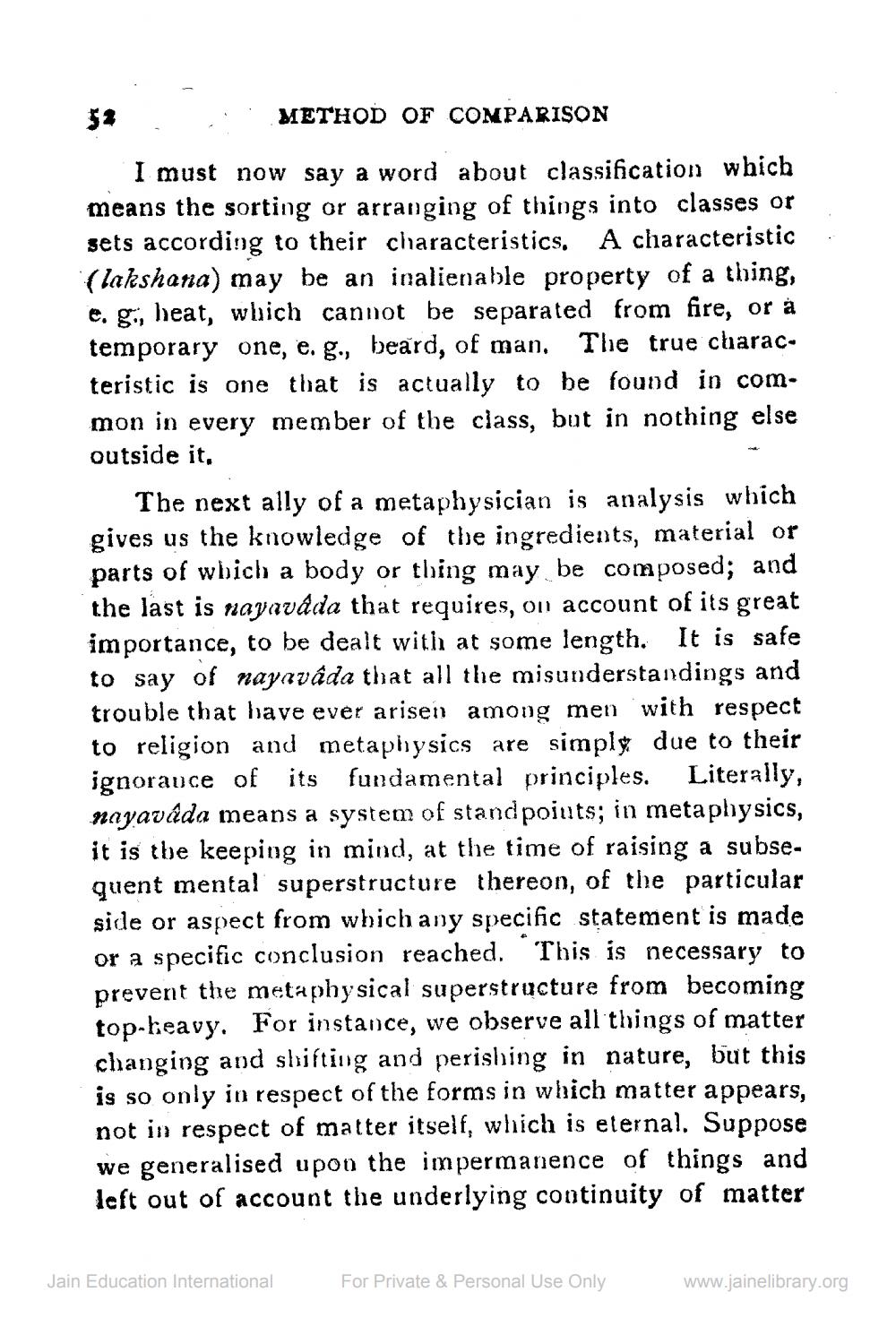________________
52
METHOD OF CONPARISON
I must now say a word about classification which means the sorting or arranging of things into classes or sets according to their characteristics. A characteristic (lakshana) may be an inalienable property of a thing, e. g, heat, which cannot be separated from fire, or a temporary one, e. g., beard, of man. The true characteristic is one that is actually to be found in common in every member of the class, but in nothing else outside it.
The next ally of a metaphysician is analysis which gives us the knowledge of the ingredients, material or parts of which a body or thing may be composed; and the last is nayaváda that requires, on account of its great importance, to be dealt with at some length. It is safe to say of nayavāda that all the misunderstandings and trouble that have ever arisen among men with respect to religion and metaphysics are simply due to their ignoravce of its fundamental principles. Literally, nayaváda means a system of standpoints; in metaphysics, it is the keeping in mind, at the time of raising a subsequent mental superstructure thereon, of the particular side or aspect from which any specific statement is made or a specific conclusion reached. This is necessary to prevent the metaphysical superstructure from becoming top-beavy. For instance, we observe all things of matter changing and shifting and perishing in nature, but this is so only in respect of the forms in which matter appears, not in respect of matter itself, which is eternal. Suppose we generalised upon the impermanence of things and left out of account the underlying continuity of matter
Jain Education International
For Private & Personal Use Only
www.jainelibrary.org




